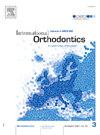What is the most effective method for reducing pain during debonding procedures? A systematic review
IF 1.9
Q2 DENTISTRY, ORAL SURGERY & MEDICINE
引用次数: 0
Abstract
Objective
This study aimed to investigate the most effective methods in controlling pain during debonding procedures.
Material and methods
Electronic searches in published and unpublished studies were performed. Restricted to the English language and publication date up to 23/3/2024, the searches in published literature covered the following databases: MEDLINE, PubMed, EMBASE, Tripe, Web of Science, Scopus and PubMed Central. However, unpublished literature was searched at ClinicalTrials.gov, National Research Register, and ProQuest Dissertations and Theses. Lists of all eligible studies were checked for further scrutiny. Risk of bias for randomized and non-randomized control trials was assessed using ROB2 and ROBINS Cochrane tools.
Results
Thirteen RCTs and two non-RCTs were included. All the reviewed articles studied the pain during debonding events and included 886 patients aged between 12–65. They used different scales such as VAS, NRS, Wong–Baker faces, and others scales. Two studies have shown that the lift-off plier causes less pain than other pliers when comparing different types of dental instruments. However, when comparing different adjunctive techniques, two studies have found that using a wafer causes less pain, while two studies have reported no significant difference between methods and one study has found that using finger pressure causes less pain. In addition, three separate studies have found that utilizing an ultrasonic device, as well as a thermal device and laser radiation, can lead to lower pain scores. Furthermore, two studies have demonstrated that using medication has a positive impact on reducing pain.
Conclusions
According to reported evidence, applying finger pressure is more effective in relieving pain in the anterior teeth, while wafer biting is more effective in the posterior teeth. Pain-relieving medications like paracetamol or ibuprofen can also effectively reduce debonding pain. Promising procedures, such as using diode or Er-YAG lasers, and thermal devices, may also be effective, but further studies are needed to confirm their efficacy. The protocol of this systematic review was registered with the PROSPERO International Database under ID number CRD42024529190. This review follows the guidelines established by the Preferred Reporting Items for Systematic Reviews and Meta-Analyses (PRISMA) statement and the instructions provided in the Cochrane Handbook.
在脱粘过程中减轻疼痛最有效的方法是什么?系统回顾。
目的:探讨手术过程中控制疼痛的最有效方法。材料和方法:对已发表和未发表的研究进行电子检索。已发表文献的检索限于英文,出版日期为23/3/2024,检索数据库包括:MEDLINE、PubMed、EMBASE、Tripe、Web of Science、Scopus和PubMed Central。然而,未发表的文献是在ClinicalTrials.gov、National Research Register和ProQuest dissertation and thesis上检索的。检查所有符合条件的研究清单,以便进一步审查。随机对照试验和非随机对照试验的偏倚风险采用ROB2和ROBINS Cochrane工具进行评估。结果:纳入13项随机对照试验和2项非随机对照试验。所有回顾的文章都研究了脱粘事件期间的疼痛,包括886名年龄在12-65岁之间的患者。他们使用了不同的量表,如VAS、NRS、Wong-Baker脸和其他量表。两项研究表明,当比较不同类型的牙科器械时,升降钳比其他钳子造成的疼痛更少。然而,当比较不同的辅助技术时,两项研究发现使用晶片引起的疼痛更少,而两项研究报告方法之间没有显著差异,一项研究发现使用手指按压引起的疼痛更少。此外,三个独立的研究发现,使用超声波设备,以及热设备和激光辐射,可以导致较低的疼痛评分。此外,两项研究表明,使用药物对减轻疼痛有积极的影响。结论:根据文献报道,手指按压对前牙疼痛的缓解效果较好,而咬片对后牙疼痛的缓解效果较好。止痛药物,如扑热息痛或布洛芬,也可以有效地减少脱粘疼痛。有希望的程序,如使用二极管或Er-YAG激光器和热器件,也可能有效,但需要进一步的研究来证实其有效性。本系统评价的方案已在普洛斯彼罗国际数据库注册,ID号为CRD42024529190。本综述遵循系统评价和荟萃分析首选报告项目(PRISMA)声明和Cochrane手册中提供的指导方针。
本文章由计算机程序翻译,如有差异,请以英文原文为准。
求助全文
约1分钟内获得全文
求助全文
来源期刊

International Orthodontics
DENTISTRY, ORAL SURGERY & MEDICINE-
CiteScore
2.50
自引率
13.30%
发文量
71
审稿时长
26 days
期刊介绍:
Une revue de référence dans le domaine de orthodontie et des disciplines frontières Your reference in dentofacial orthopedics International Orthodontics adresse aux orthodontistes, aux dentistes, aux stomatologistes, aux chirurgiens maxillo-faciaux et aux plasticiens de la face, ainsi quà leurs assistant(e)s. International Orthodontics is addressed to orthodontists, dentists, stomatologists, maxillofacial surgeons and facial plastic surgeons, as well as their assistants.
 求助内容:
求助内容: 应助结果提醒方式:
应助结果提醒方式:


